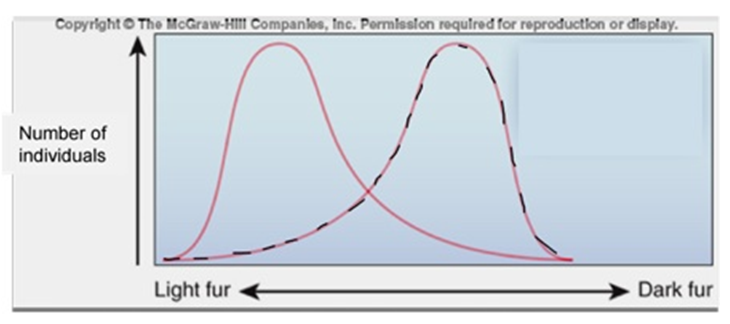The ground meristem gives rise to which of the following?
A. ground tissue
B. tissue found between the dermal and conducting tissues
C. a pith in the center of a plant stem
D. parenchyma cells
E. All of the choices are correct
E. All of the choices are correct
You might also like to view...
What type of natural selection are the population of voles going through?
A population of voles (very small mammals) live in a shady forest. The all of the voles are a light tan color, a dark brown coloration arises by a new mutation. The darker voles are harder for predators to see in the leaf litter, thus they are less susceptible to predation. After 10 generations the majority of voles in the population are the dark brown color. In the figure above the solid red line represents the number of light colored individuals before the mutation and the black dashed line represents the number of dark brown individuals after 10 generations.

A. Directional selection.
B. Stabilizing selection.
C. Diversifying selection (disruptive selection).
D. Balancing selection.
E. Negative frequency-dependent selection.
Root nodules are
a. intertwined roots of different species of plants. b. connecting points between branching roots. c. symbiotic associations between a fungus and plant roots. d. specialized root hairs. e. localized swellings in plant roots filled with nitrogen-fixing bacteria.
The term ‘coral bleaching' refers to:
a. the loss of a protistan symbiont by a reef-building coral b. the growth of new cnidarians within a reef c. the color change in coral reefs as they become mature d. an invasion of a coral reef by a colorless protistan as opposed to a green, photosynthetic one e. the loss of the calcium carbonate skeleton of cnidarian polyps
Which of the following stimuli most directly causes the Venus flytrap to catch an insect?
a. gravity b. light c. touch d. scent e. sound